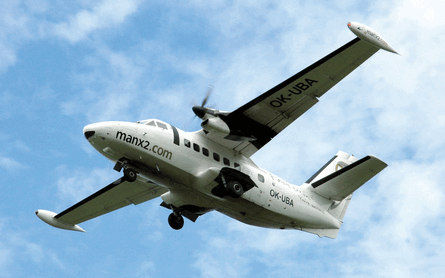Embraer could evolve a family of up to four new-generation turboprop models as it evaluates a possible re-entry into the propeller-driven airliner sector.
Last month Embraer president and chief executive Fred Curado revealed that the Brazilian manufacturer is analysing the potential for a new commercial turboprop, following the collapse in the small regional jet market.
Although the study is in its infancy, Embraer market intelligence vice-president Luiz Sergio Chiessi says the manufacturer is likely to develop a family of aircraft should the turboprop project be adopted.
Speaking at Embraer's European headquarters in Paris at a pre-Farnborough briefing, Chiessi said: “I believe that everything nowadays has to be a family - a family of two, three or four aircraft. It has to be a family because it offers something more effective for the airline and for the research, design, certification and production process. We are at the very early stages of looking at this segment.”
Chiessi emphasises that Embraer is analysing a number of options alongside the turboprop project, adding that it is too early to even list the other initiatives. He says: “It depends on the evolution of the market place and where the opportunities will be.”
The analysis has been made possible by the E-Jets family consuming less of the manufacturer's engineering resources.
Although the rise in fuel costs has blighted the market for 50-seat jets, Chiessi believes the aircraft still have a role to play both in the USA and in other countries to support their hub and spoke systems: “If you kill small-capacity aircraft, you kill the connections.” However, he does see reductions in the US 50-seat jet fleet in favour of larger regional aircraft, with up to 250 destined to gradually migrate over the next five years to new markets such as Africa, the CIS and Mexico as restrictive scope clauses continue to be relaxed.
 |
|---|
The Embraer view could have an impact on thinking at giant engine maker GE. GE has a strong relationship with Embraer because GE CF34 engines power Embraer 170 and Embraer 190 regional jet aircraft and is now evaluating whether to return to manufacturing turboprop engines for commercial aircraft - if it makes such a move then Czech engine manufacturer Walter Engines will be its partner in the venture.
GE Infrastructure president and CEO, John Rice, confirms the company is considering manufacturing turboprop engines for commercial aircraft. saying the growth in the turboprop market is one reason behind GE’s purchase last year of Walter Engines.
Walter Engines today mostly makes engines for general aviation aircraft but its M601E engine powers the L-410UVP-E20 commuter produced by Czech manufacturer Let Aircraft Industries, while the M601F powers the improved L-420. Previously GE made the CT7 turboprop engine for Saab 340 commuterliner before that aircraft’s production stopped in May 1999.
The increase in interest in turboprops comes as no surprise to UK engine manufacturer Rolls-Royce. The company has been actively talking up the possibility of a new generation of turboprop-powered aircraft replacing a substantial proportion of today’s jet narrowbodies high oil prices are likely to drive airframers to sacrifice cruise speed for economics.
Colin Smith, Rolls-Royce director, engineering and technology, told a pre-Farnborough briefing there was a very sound argument to be made for the majority of the 150-seat market, which flies mostly for less than 1.5 hours to be turboprop-powered. He highlighted the TP400 engine for the Airbus A400M military transport as a very efficient propulsion system.
“As a passenger I don’t care how fast I fly, I care about the check-in time. As a designer it is silly to fly at M0.82 for that range. But it is sensible to get people on and off quickly. There are good sound arguments there. If somebody does want a high efficiency turboprop then have we got one for you!”
Mark King, Rolls-Royce president, civil aerospace, adds: “More and more manufacturers are looking at whether the bottom half of this market would be better addressed with turboprops.” But he stresses that the engine-makers have yet to be asked by the airframers to satisfy a specific requirement.
He says: “Frankly we don’t know the question yet. All we know is that a lot of people who currently fly around in 150-seat aircraft will need transporting in the future. Is that going to be in a single-aisle or twin-aisle? There are plenty of persuasive arguments about what that will be. What is the range of this thing? A thousand miles or 3,000 miles leads to fundamentally different machines.”
King stresses, however, that there remains great uncertainty about the timescale of when airframers will launch new programmes in the 150-seat class, and says the timing will in turn affect the technological solutions offered by engine-providers.
He explains: “There are so many different things that affect the timescale. Open-rotor is 2018; turboprop we are in the middle of; advanced turbofan is just the typical engine development timescale. And the other thing that will affect timing is the priorities of the airframers. Is it the 150-seater or is it another widebody? But it is about match-fitness and we are right at the heart of it.”
Rolls-Royce will start running a new open-rotor engine test rig in the next couple of weeks, which it says will allow testing of units that “are not core size but are pretty big”.
King adds: “The kind of open-rotors that we are looking at are still quieter than today’s aircraft. They are just not as quiet as they would be if you were to design solely for noise.”
Source: Flight International























